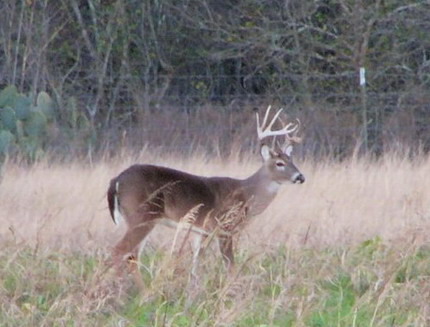The best cover for white-tailed deer is a pattern or mosaic of woody brush and trees interspersed within open areas at an approximate 60 percent open area to 40 percent woody cover. Deer are adaptable so can use habitat with more or less cover, but it’s important that clumps or strips of brush be wide enough so that an observer cannot see through them from one side to the other during the winter months when deciduous species are bare of leaves.
This gives whitetail the security they desire, the screening cover that allows them to use an area as well as hold them there. Keep in mind that cover strips should be as continuous as possible to provide travel lanes throughout the property, otherwise deer do not find them nearly as attractive. These continuous strips are especially important where cover is already limited, such as in grasslands or areas dominated by farmlands.
Deer can easily be displaced by disturbance in areas where the habitat does not provide adequate escape or security cover. The amount and distribution of cover on neighboring lands also needs to be taken into consideration when assessing cover needs of a wide-ranging species such as whitetail deer. For example, a small ranch would need a larger amount of security cover on a percentage basis than would a larger ranch where the vastness of the area provides security.
Remember, promoting ideal cover requirements for white-tailed deer to retreat into when disturbed may keep the animals calmer, less stressed, on your property and ultimately more productive. Landowners interested in managing for deer should aim for a minimum of 25 percent cover and a maximum of 75 percent. Deer will make use of many properties, but it’s hard to manage a deer population if you don’t have one.
